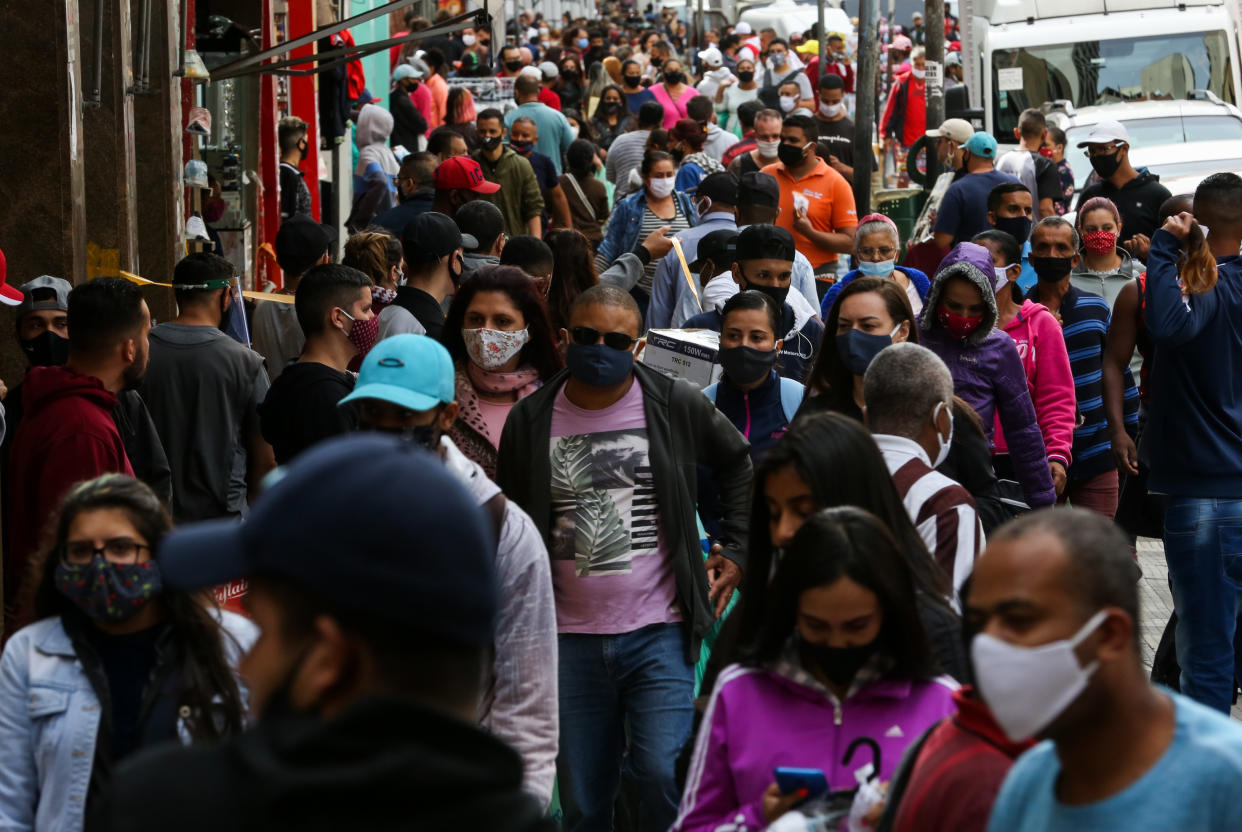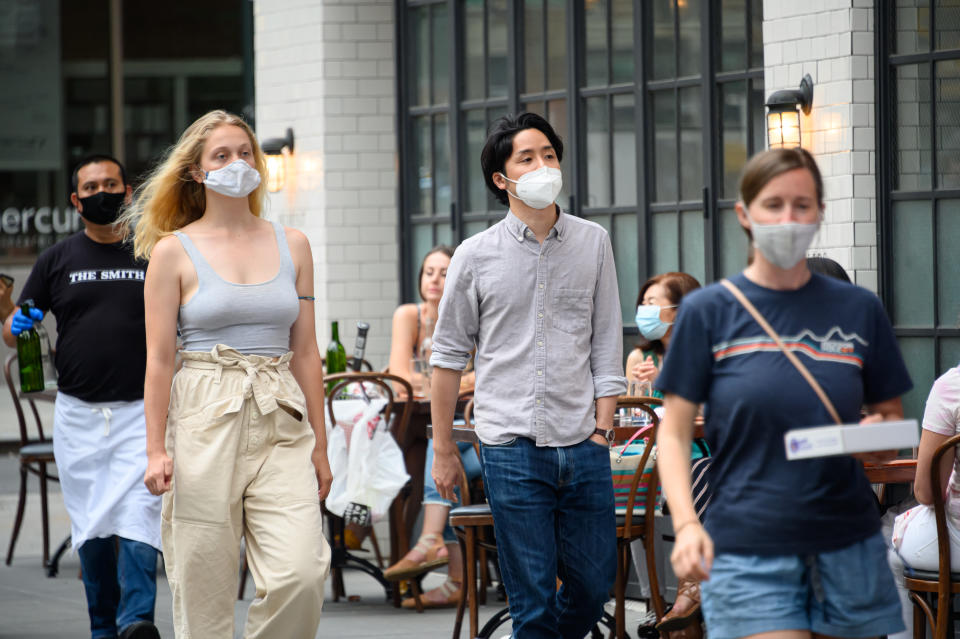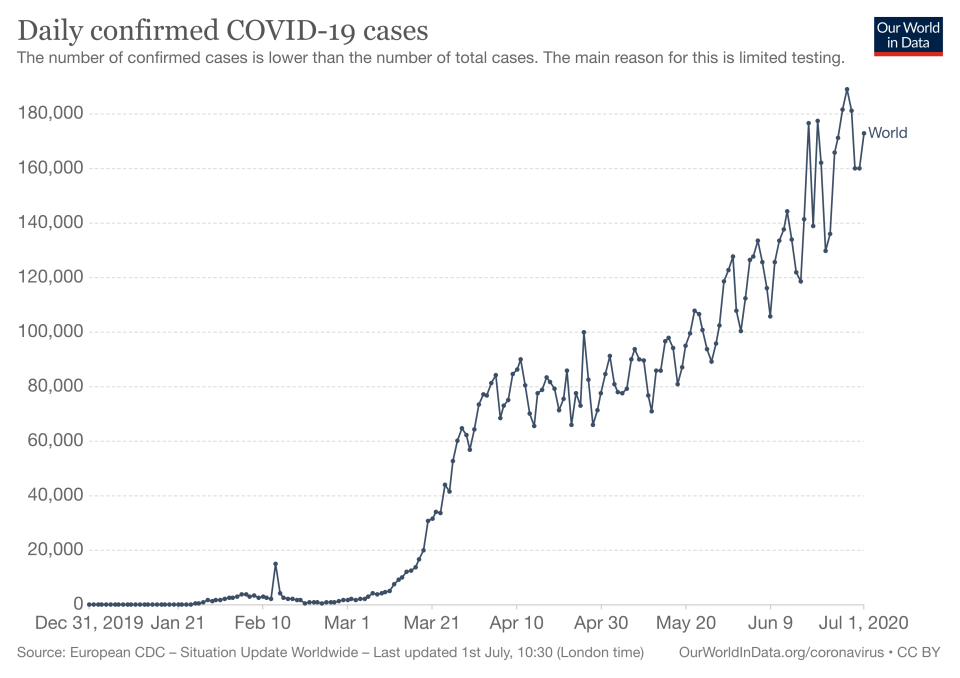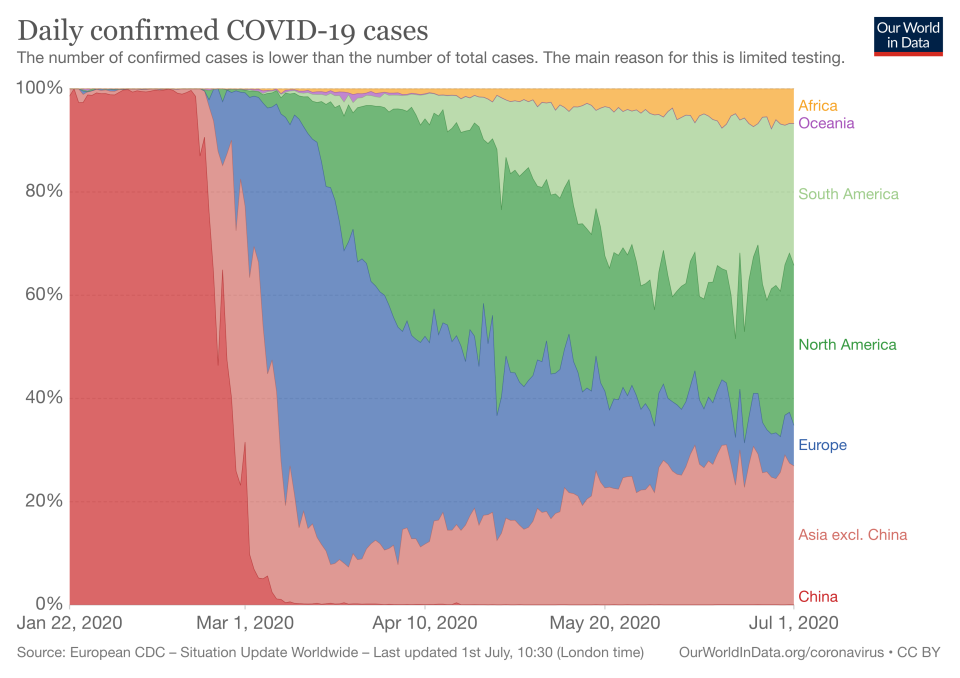Two charts that show how bad coronavirus pandemic is right now

The World Health Organization (WHO) has insisted it is never too late to turn around the coronavirus pandemic as it warned global daily cases were above 160,000 for the past week.
Two charts from Our World in Data show how serious the outbreak is in several regions, including the US.
More than 10.3 million cases of COVID-19 have now been reported to the WHO, and more than 506,000 deaths.
In total 60% of all infections have been reported just in the past month.
WHO director-general Dr Tedros Adhanom Ghebreyesus advised countries who were currently struggling it was never too late to change course.
“Countries that have the systems in place to apply a comprehensive approach should be able to contain these flare-ups locally and avoid reintroducing widespread restrictions,” Dr Tedros said at the WHO coronavirus briefing on Wednesday.
“However, we are concerned that some countries have not used all the tools at their disposal and have taken a fragmented approach.
“These countries face a long, hard road ahead.
“But one of the lessons of the pandemic is that no matter what situation a country is in, it can be turned around. It’s never too late.”
He pointed to Italy and Spain as examples of nations who had got control of the pandemic after a tough period.

At the peak of its epidemic, Spain had almost 10,000 cases a day, and Italy had more than 6,500 cases.
Dr Tedros said both countries brought their epidemics under control with a combination of leadership, humility, active participation by every member of society, and implementing a comprehensive approach.
This comprehensive approach included testing, physical distancing, contact tracing and using masks in public places.
The Our World in Data charts show the number of cases have begun to rise around the world and it’s particularly bad in the United States and Brazil.


Cases in the US rose by more than 47,000 on Tuesday according to a Reuters tally, the biggest one-day spike since the start of the pandemic, as the government’s top infectious disease expert Dr Anthony Fauci warned that number could soon double.
He said the daily increase in new cases could reach 100,000 unless a nationwide push was made to slow down the resurgent virus.
Brazil announced on Tuesday it would restrict the entrance of foreigners to the country for 30 days due to the pandemic.
The South American country has the second-highest number of cases and deaths due to COVID-19, second only to the US.
According to the health ministry, the country has 1.4 million cases and 59,594 people have died.
Coronavirus: what happened today
Read more about COVID-19
How to get a coronavirus test if you have symptoms
How easing of lockdown rules affects you
In pictures: How UK school classrooms could look in new normal
How public transport could look after lockdown
How our public spaces will change in the future
Help and advice
Read the full list of official FAQs here
10 tips from the NHS to help deal with anxiety



